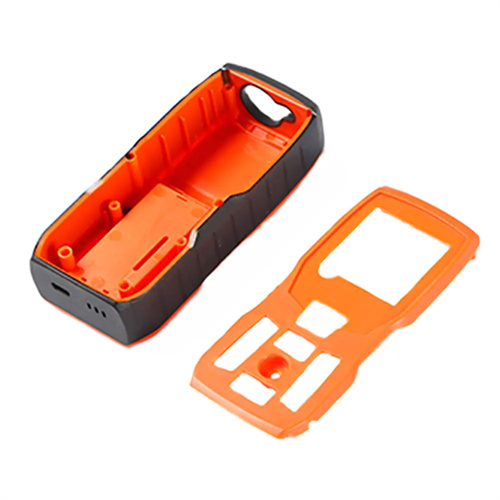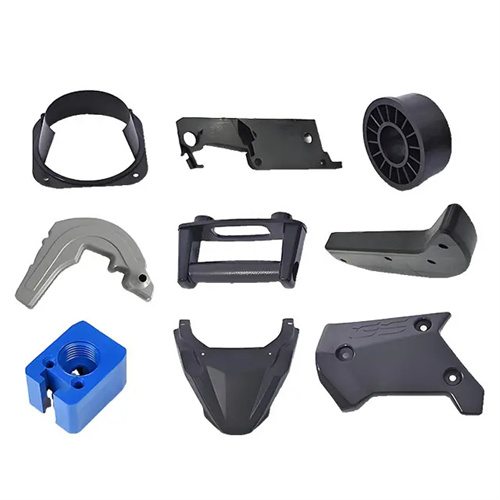Movable mold inclined top, fixed mold T-shaped block composite core pulling
In injection mold design, when a part features complex undercuts, side holes, or undercuts, a single core-pulling mechanism often fails to meet demolding requirements. However, a composite core-pulling mechanism combining a movable mold slant and a fixed mold T-block, thanks to its synergistic nature, effectively addresses the demolding challenges of such complex parts. This composite core-pulling mechanism combines the advantages of the movable mold slant’s inclined core-pulling with the lateral core-pulling of the fixed mold T-block. Through their coordinated operation, they enable core-pulling in different directions, ensuring smooth demolding without deformation or damage. For example, for parts with both an inner concave and an outer boss, the movable mold slant alone cannot simultaneously pull cores in both directions. However, the addition of a fixed mold T-block allows the T-block to first remove the obstruction of the outer boss, while the slant allows the core-pulling of the inner concave to be completed, thus achieving efficient demolding of complex structures.

The operating principle of the combined core-pulling mechanism of the movable mold’s inclined ejector and the fixed mold’s T-block is based on the relative motion during mold opening and closing. The coordinated and orderly core-pulling action is ensured by rationally designing the movement trajectories and timing of both. The movable mold’s inclined ejector is typically mounted on the movable mold base plate and connected to the ejector mechanism via inclined guide pins or slots. When the movable mold separates from the fixed mold, the ejector mechanism drives the inclined ejector in an inclined direction, achieving core pulling from the inside or an inclined direction of the plastic part. The fixed mold’s T-block is mounted on the fixed mold base plate and its movement is typically driven by inclined guide pins or a hydraulic cylinder on the fixed mold. During the initial mold opening, the T-block moves laterally or diagonally to remove undercuts or bosses on the outside of the plastic part. The timing of their movements requires strict control. Generally, the fixed mold’s T-block completes its core pulling first to avoid interference with the movable mold’s inclined ejector. Once the T-block has pulled its core into place, the movable mold’s inclined ejector begins its movement, ultimately completing the demolding process.

The structural design of a composite core-pulling mechanism requires comprehensive consideration of factors such as the structural characteristics of the plastic part, the core-pulling distance, the core-pulling force, and the overall dimensions of the mold. The tilt angle of the movable mold’s lifter is typically designed between 15° and 25°. An angle that is too large can easily cause the lifter to deform due to excessive force, while an angle that is too small can increase the core-pulling distance and mold size. The cross-sectional shape of the lifter should be determined based on the shape of the inner concave portion of the plastic part to ensure it can completely detach from the part during core-pulling while maintaining sufficient strength and rigidity. The structure of the fixed mold’s T-block must be designed based on the size and position of the undercut on the outside of the plastic part. The core-pulling direction of the T-block should align with the undercut direction, and the core-pulling distance must be greater than the depth of the undercut, with a safety distance of 3-5mm reserved. A clearance fit is typically used between the T-block and the fixed mold base plate to ensure smooth movement, and guide devices (such as guide grooves and guide posts) are provided to ensure its movement accuracy.

The drive method for a composite core-pulling mechanism needs to be carefully selected based on the core-pulling force and the required motion control precision. For applications with low core-pulling forces and simple motion sequences, a mechanical drive method can be used. For example, inclined guide pillars drive the fixed mold T-block, while the movement of the ejector mechanism drives the movable mold lifter. This method offers a simple structure and low cost, but the motion control precision is relatively low. For applications with high core-pulling forces and complex motion sequences, a hydraulic or pneumatic drive method is preferred. Cylinders are used to drive the fixed mold T-block and movable mold lifter, respectively, with solenoid valves and sensors controlling the movement sequence and speed. This method provides high core-pulling force, flexible motion control, and high precision, but is relatively complex and expensive. For example, in molds for large automotive plastic parts, hydraulically driven composite core-pulling mechanisms are often used due to the high core-pulling forces and the need for precise control of the core-pulling sequence.

The commissioning and maintenance of the combined core-pulling mechanism of the movable mold’s inclined ejector and the fixed mold’s T-block are crucial to ensuring proper operation. During commissioning, it’s crucial to check the coordinated movement of the two mechanisms, ensuring that the movable mold’s inclined ejector begins moving only after the fixed mold’s T-block core is pulled into place to avoid interference. By adjusting parameters such as the angle of the inclined guide pins and the ejector mechanism’s stroke, the core-pulling distance meets design requirements. Furthermore, the core-pulling force must be tested to ensure it meets sufficient force to prevent deformation or damage to the plastic part. During routine maintenance, the moving parts of the core-pulling mechanism should be regularly cleaned to remove impurities such as plastic debris and oil to prevent movement obstruction. The mating parts, such as the inclined guide pins and guide grooves, should be lubricated to reduce wear. Components, such as the top of the inclined ejector and the working surface of the T-block, should be inspected for wear and replaced promptly if severe wear is detected to ensure core-pulling accuracy and part quality. Through proper design, commissioning, and maintenance, the combined core-pulling mechanism of the movable mold’s inclined ejector and the fixed mold’s T-block can effectively address the demolding challenges of complex plastic parts, improving the efficiency and quality of injection molding production.
